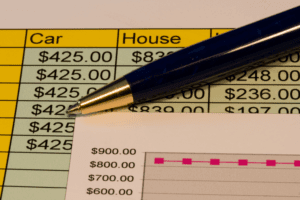Content

The margin is 25%, meaning you keep 25% of your total revenue. You spend the other 75% of your revenue on producing the bicycle. All three of these terms come into play with both margin and markup—just in different ways. Automating your back office procedures whenever possible will ensure you collect timely and accurate data on every single transaction that runs through your company. The cost of manufacturing the Zealot may not always stay at $18 (actually, it definitely won’t). So the wise staff at Archon Optical will want to make sure that they constantly adjust prices to reflect the increase in cost.
What is a 25% markup of 30?
A 25% markup means that the price of an item to be sold to a customer is 25% higher than the cost to the seller. An item priced at $30 with a 25% markup means the cost to the seller was $24.
To make a profit of 5% on sales, you must make a margin of 30%. This is not a mark-up of 30% – this would mean your margin is only 23%. If this was the case, rather than make a profit of 5% you would actually be losing 2%.
How to Add a Markup Percent to a Product
Markup and margin are used in many businesses, and it’s essential to understand the difference in order to run a business successfully. Markup is the amount that you increase the price of a product to determine the selling price. Though this sounds similar to the margin, it actually shows you how much above cost you’re selling a product for.
- Revenue is the money your company earns from selling products and services.
- All three of these terms come into play with both margin and markup—just in different ways.
- For example, a supplier who sells huge amounts of products may mark up their items 7% to 10%, but a gift shop in a touristy area might mark up their products by 50%.
- Markup is necessary for the beginning stage to closely understand the performance and costs.
- This is especially true if you have a lot of competition, or there isn’t something inherently unique about what you sell.
- Of course, profit margin and markup can both be calculated even if you’re using a manual accounting system, though your results may be less accurate.
- You can calculate profit margin as a percentage by dividing the profit margin in dollars by the sale price in dollars, then multiplying by 100.
Margin (or gross profit margin) shows the revenue you make after paying COGS. Basically, your margin is the difference between what you earned and how much you spent to earn it. Although margins and markups are fairly simple concepts to understand, they can be tricky to master due to their many similarities. As a result, handling them in your company might require you to instill a few best practices for margins and markups in your sales policies and procedures.
What Is Markup?
Say you own a pizza shop and want to calculate your margin for your large pizzas marked at a sale price of $14.99. Some accounting software packages include calculators for converting margin to markup and vice versa as well. So to maintain a profit margin above 30%, you need a markup of 42.85% or higher on your items. As a business owner, you might very well know “it takes money to make money.” But how do you make more money while spending less? How do you know if you’re collecting the right data and calculating it properly? A trusted team of experts can help you answer those questions—and keep your startup on the road to profitability.

With all that in mind, let’s have a look at what profit margin is. Margin and markup are not the same thing, despite the terms being used interchangeably at times. On the contrary, both are vital ratios with a unique perspective on your company’s Bookkeeper360 Review 2023: Pricing, Features & More financial health and strategy. We know that to get a 33.3 percent gross margin, you have to use a markup of 1.5. In the same way, if you want to know what markup to use to obtain a given gross margin, the following equation will help.
Gross Margin
To see the big picture and understand your profitability, you need to know important metrics like your gross margin and markup percentage. In the same way that there is a general rule of thumb for looking https://simple-accounting.org/bookkeeper360-app-xero-integration-reviews/ at profit margins, the same goes for calculating the markup. Most companies will set an average retail markup — also known as a “keystone”– of 50 or 60%, but it really depends on product and industry.
What is 30% cost margin?
Turn 30% into a decimal by dividing 30 by 100, which is 0.3. Minus 0.3 from 1 to get 0.7. Divide the price the good cost you by 0.7. The number that you receive is how much you need to sell the item for to get a 30% profit margin.
The markup formula measures how much more you sell your items for than the amount you pay for them. The higher the markup, the more revenue you keep when you make a sale. Understanding margin vs markup will lead to business success, including restaurant success. It’s a brick and mortar and eCommerce marketing strategy that will give you insight into your business’s financial standing.
What Is Margin: Margin Definition
The good news is that margins and markups interact in a predictable way. Download our free guide, Price to Sell … and Profit, to start setting prices that are based on data (and not just a whim!). Trade on margin refers to businesses borrowing money from brokerage firms to conduct trades. By trading and buying on margin, investors deposit cash as collateral for the margin loan they’re receiving and pay an interest rate on the borrowed money. Keep reading to learn more about what is margin, margin vs markup, how to calculate them, and how to convert numbers between the two. You would often write margin as a specific amount in currency or as a percentage.

However, a potential downside of the markup strategy is that it may not account for market fluctuations or changes in consumer demand. In some cases, using a fixed markup percentage may result in over or under-pricing of products, negatively impacting sales and profitability. Both margin and markup can be used by business owners to determine profit margin or to set or reexamine pricing strategies. It’s important to understand exactly what the two mean and how they affect your bottom line so that you can price your products effectively.




